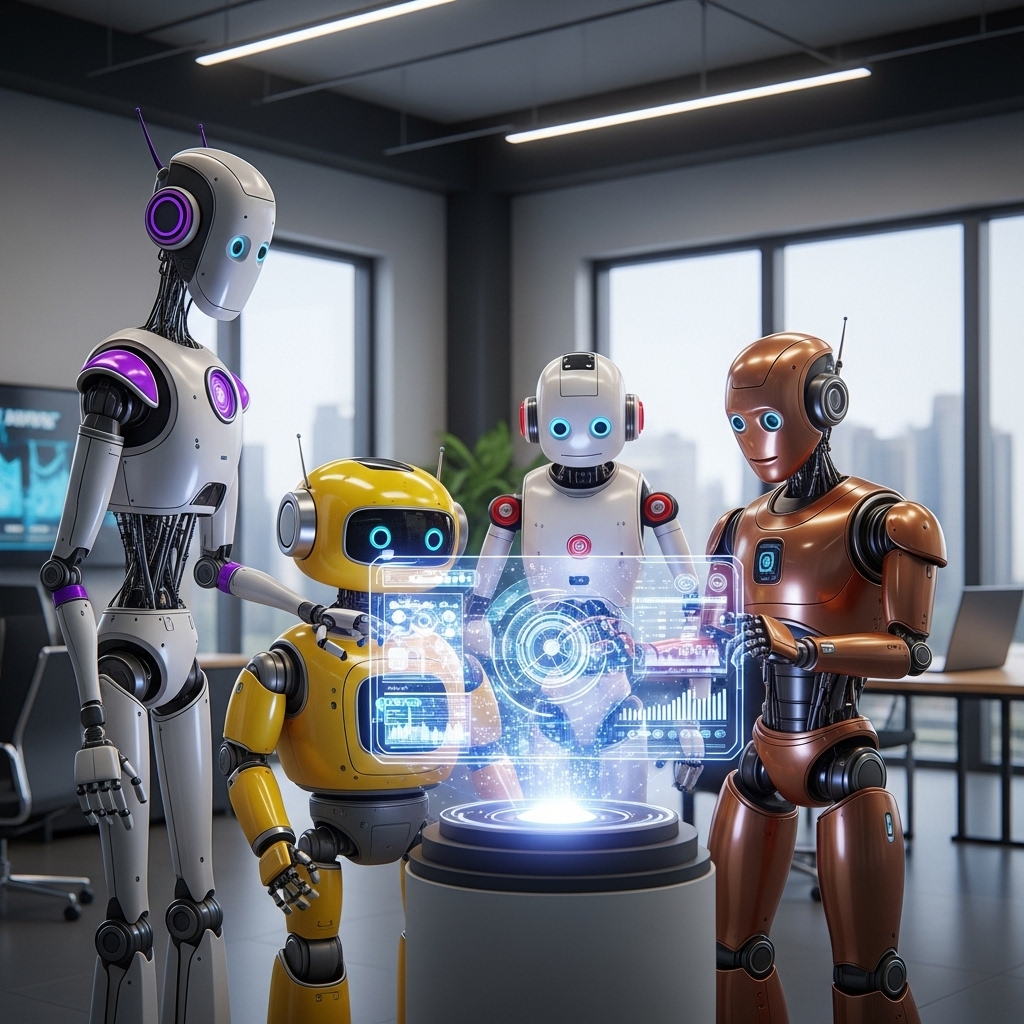

The robots aren't coming for your job. They're applying for it.
For decades, science fiction has served us two flavors of artificial intelligence: the benevolent, all-knowing helper or the malevolent, world-conquering overlord. But as we stand on the cusp of a genuine AI revolution, the reality emerging is something far more practical, powerful, and, frankly, more interesting.
We're not building a single, monolithic "Skynet." We're building teams. We're designing entire workforces of specialized, collaborative AI "agents" that can plan, reason, and execute complex tasks. This isn't a far-future fantasy; it's the next paradigm of software development. The AI agent market, valued at a cool $5.2 billion in 2024, is projected to skyrocket to nearly $200 billion by 2034.
For the CEOs, CTOs, and innovators reading this, the question is no longer if you should be paying attention, but what you need to understand to lead the charge. The answer lies in a new architectural playbook: Agentic Design Patterns.
The leap from a simple chatbot to a true AI agent has been staggering. Just a couple of years ago, we were impressed by AI that could answer a question. Today, we're building systems that can run entire projects.
This journey has had a few key milestones:
So, what exactly is an "agent"? Think of it as a digital employee that operates on a simple but powerful loop: it gets a mission, gathers information, thinks through a plan, takes action, and most importantly learns from the outcome to get better next time.
Building these systems isn't about finding one magical "super-prompt." It's about architecture. Just as you'd use design patterns to build scalable software, you use agentic patterns to build intelligent systems. Let's peek into the playbook.
A language model, by itself, is a brain in a jar. It knows a lot about the world up until its training date, but it can't check today's weather, your company's latest sales figures, or your inventory levels.
The Tool Use pattern (also known as Function Calling) is what breaks the AI out of this box. It gives the agent the ability to interact with the outside world by calling APIs, querying databases, or using other external services.
If Tool Use gives an agent hands, the Planning pattern gives it a brain for strategy. Instead of just executing a single command, an agent with planning capabilities can break down a complex, high-level goal into a sequence of manageable steps.
This is the difference between asking someone to "hammer this nail" and asking them to "build a deck."
This is the holy grail and the pattern that unlocks massive potential. Complex problems are rarely solved by a single person, and the same is true for AI. The
Multi-Agent Collaboration pattern addresses this by structuring a system as a cooperative team of distinct, specialized agents.
Think of it like building a software development team, but with AI:
These agents collaborate, passing their work to the next in the chain, creating a final result that is far beyond the capability of any single agent.
The development of AI agents is accelerating at a dizzying pace. We're moving toward a future of proactive, personalized AI partners and entire agent-driven economies. This isn't a doomsday prediction; it's a forecast of unprecedented opportunity.
Building these systems requires a new way of thinking—an architectural mindset focused on collaboration, planning, and interaction with the real world. The agentic design patterns outlined here are not just theoretical concepts; they are the practical, hands-on building blocks for creating the next generation of intelligent systems.
For the visionaries looking to build the future, the canvas is ready. The patterns are here. The only remaining question is:
What will you build?
Ready to move beyond simple chatbots and build a truly intelligent system? Our team lives and breathes agentic design. Contact us today to explore how these patterns can bring your most ambitious AI projects to life.